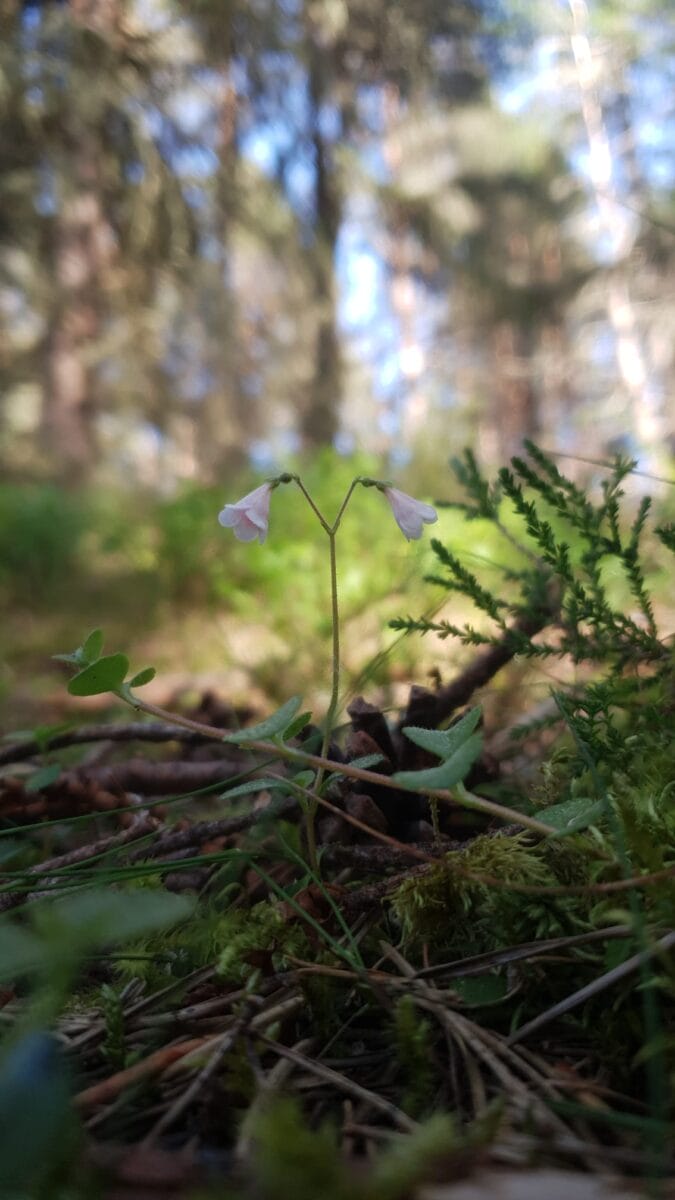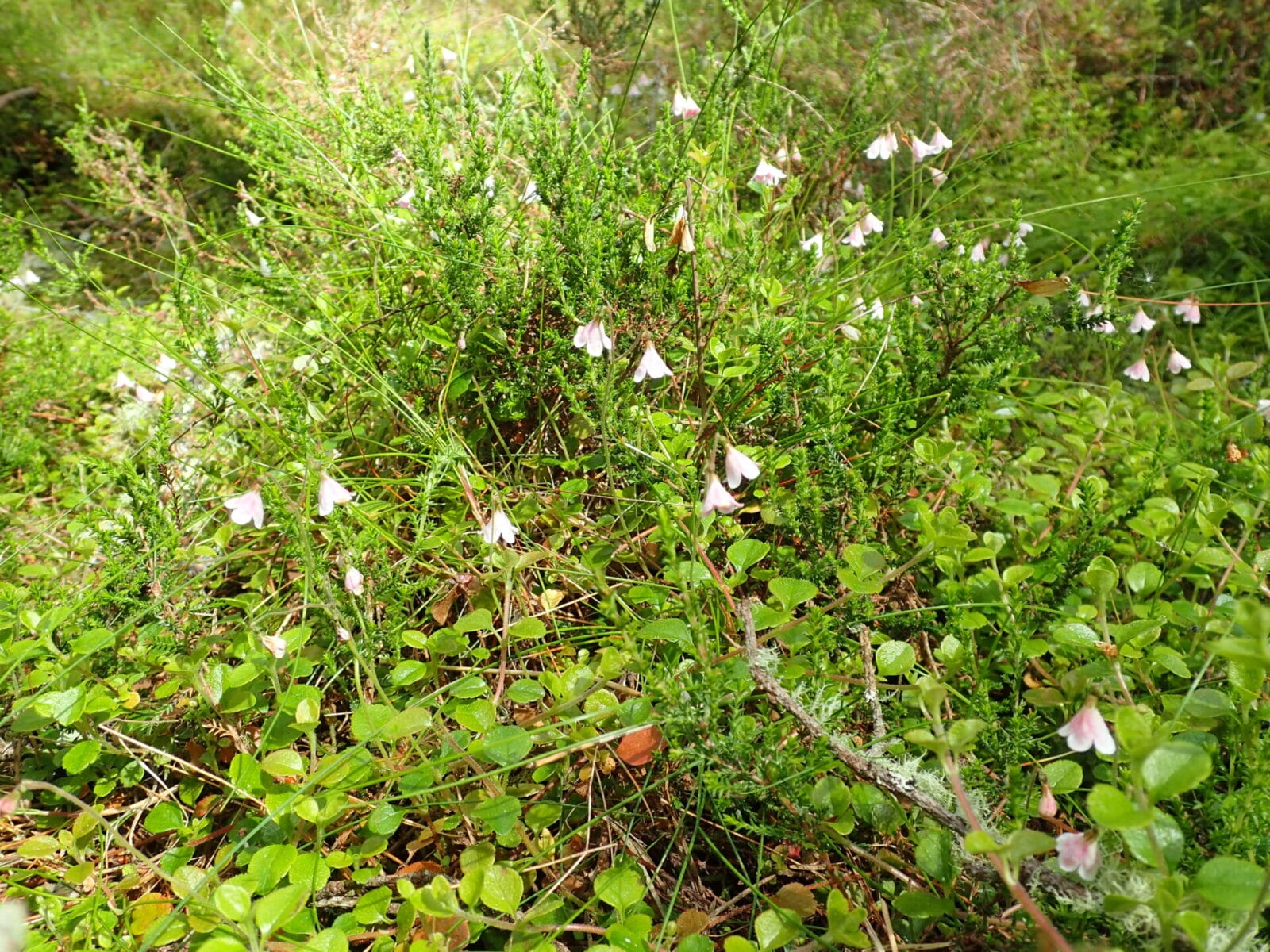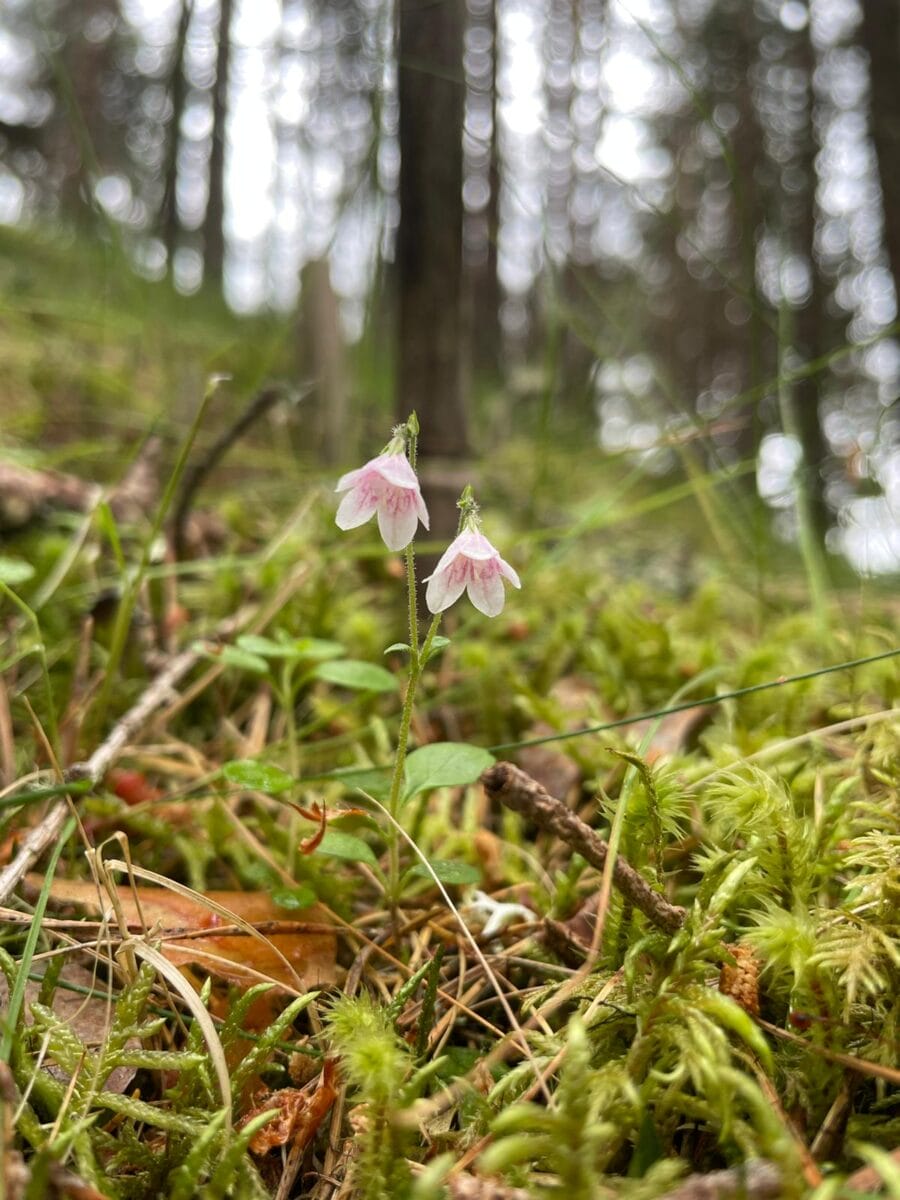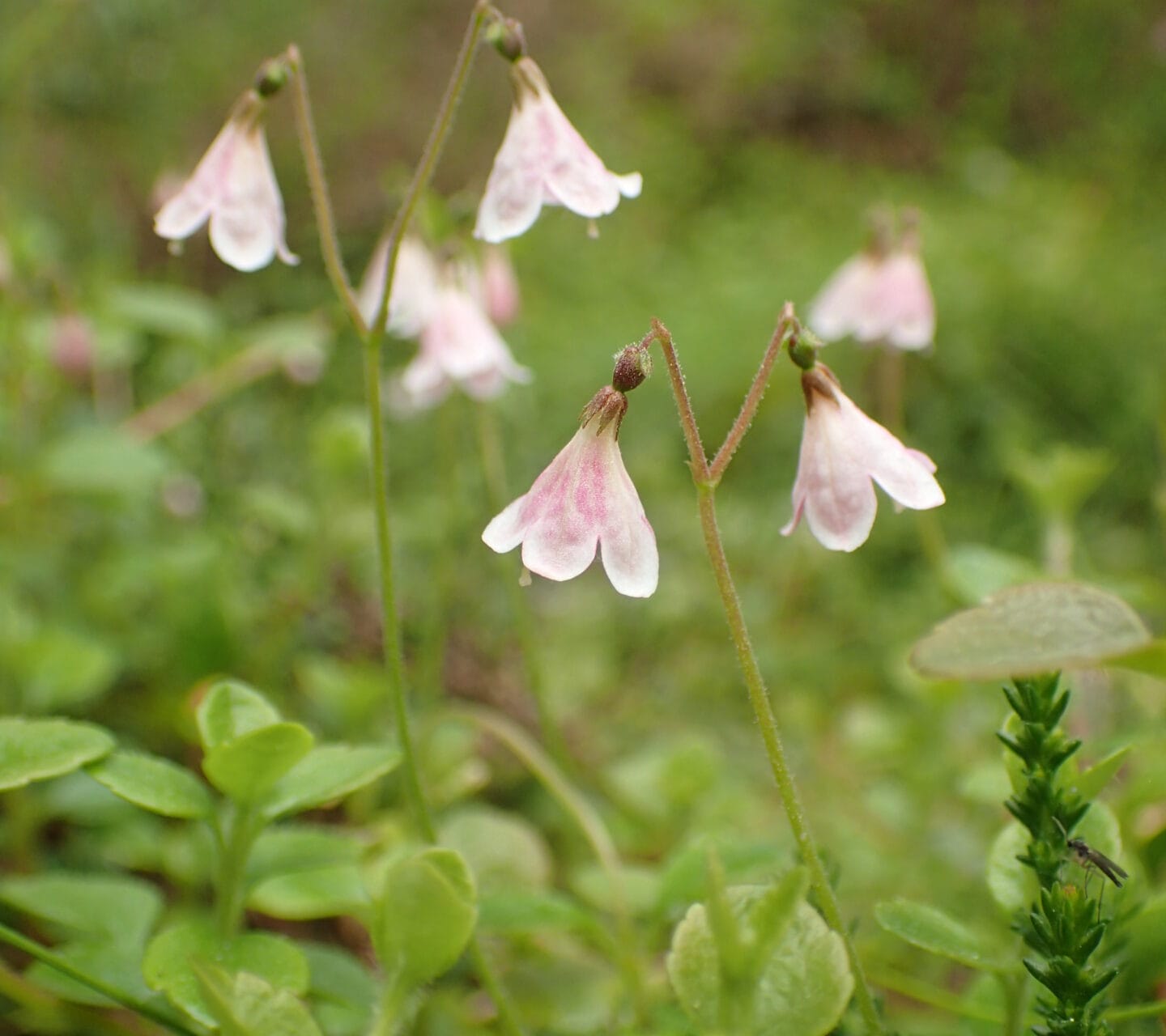The Twinflower (Linnaea borealis) is a rare plant in the UK, confined almost entirely to Pinewoods in the Scottish Highlands, where it exists at around 50 sites. Named for its dainty, symmetrical flowers, this beautiful little plant is said to have been a favourite of Carl Von Linnaeus (known as the father of modern taxonomy), hence its scientific name: Linnaea.

At many of its Highland sites the Twinflower is doing well, forming large carpets creeping through the heathery understory, however in the North Highlands its populations have become fragmented and small, meaning they are at risk of local extinctions. This risk is increased as there is no cross-pollination between sites, and so each population is essentially a genetic clone.

The North Highland Twinflower Project was set up to secure the future of this charismatic little plant in the North Highlands, by planting insurance populations and encouraging an increase in genetic diversity through cross-pollination. This has been achieved by taking small cuttings from several sites across the North Highlands, and planting them in clusters at suitable donor sites, the Pinewood at Aigas being one such place. The idea is that, if several cuttings flower in close proximity with each other, the tiny flies that pollinate them will easily be able to fly between different individuals.
When the first cuttings were brought to Aigas in 2018, we didn’t know how well they would grow, if they would flower, or even if they would survive. That summer many individuals flowered, though this was thought to be as a stress response to being moved, and likely used the nutrient stores they had built up at their original sites. The next year none flowered at all, although we saw the area covered by their leaves and creeping stems was increasing, a good sign that they had taken root…

Cut to 2024 and we have a well-established insurance population, with more and more flowering plants seen with each passing year. An impressive 72% of the original cuttings have survived, with some now spreading out over several metres. We will conduct another full flowering survey again this June, when we hope that over 50% of our cuttings will be flowering. In the future, some of these plants may be translocated to bolster populations in the North Highlands, or even reintroduce them to sites at which they’ve been lost. We will be monitoring the flowers closely to see if any are setting seed, or if any new plants are popping up around their parents, a sure sign that the cross-pollination has been successful.


